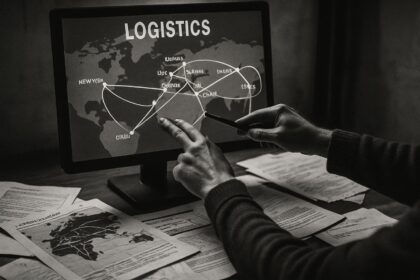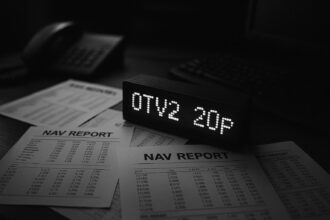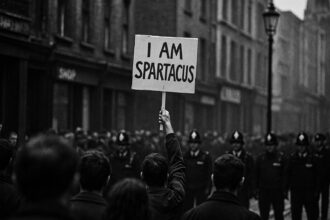Google Cloud’s latest generative AI models—Imagen 4 for image generation, Veo 3 for video creation, and Lyria 2 for text-to-music—are revolutionising creative industries by accelerating content workflows, improving quality, and enabling new artistic possibilities across marketing, media and entertainment sectors.
Google Cloud has made significant strides with its latest generative AI media models on the Vertex AI platform, namely Imagen 4, Veo 3, and Lyria 2. These advanced tools, designed for creative industries, represent an evolution in the way businesses approach content creation, streamlining processes and fostering innovation across diverse sectors including marketing, media, and entertainment.
Imagen 4, touted as Google’s highest-quality image generation model, has now entered public preview. This iteration boasts enhanced text rendering capabilities, improved adherence to user prompts, and superior image quality, catering to various artistic styles. Additionally, its multilingual support broadens its appeal to a global audience of creators. Demonstrations of Imagen 4 reveal its versatility, capable of producing everything from photorealistic images to stylised comic strips and cinematic scenes. The intention behind these capabilities is clear: to empower artists and marketers in their pursuit of creative excellence.
The introduction of Veo 3, currently in private preview, marks Google’s latest innovation in video generation. This model enables the creation of high-quality videos from text and images, incorporating features that generate dialogue, sound effects, and music. Examples of its capabilities include crafting animated scenes and artistic visual transitions, illustrating the breadth of creativity that businesses can harness using this model. The potential impact on operational efficiency appears profound, as highlighted by Klarna’s Chief Marketing Officer David Sandström, who noted that Veo has revolutionised content production at his company, converting previously lengthy processes into rapid tasks that enhance engagement and performance.
User experiences across various companies underscore the effectiveness of these generative models. For instance, Jellyfish, part of The Brandtech Group, has successfully integrated Veo into its AI marketing platform, Pencil, streamlining campaign creation and achieving significant reductions in both cost and time. David Jones, the company’s CEO, remarked on the transformative power of these AI tools, which turn once-arduous creative concepts into practical marketing content in mere minutes. Similarly, Kraft Heinz has leveraged these models to expedite their creative workflows drastically, achieving what used to be an eight-week process in just eight hours.
Lyria 2 adds a new dimension to Google’s generative offerings by enabling text-to-music generation. This model allows for the creation of high-fidelity audio tailored to specific prompts, including instrumentation and tempo adjustments. Its integration into tools like Captions.ai’s Mirage Edit feature signifies a notable advancement in video creation, facilitating the production of cohesive audiovisual narratives without extensive manual input. Co-founder Dwight Churchill highlighted the unique ability of Lyria 2 to complement user scripts and adapt to emotional nuances within videos—an essential feature for storytelling.
The growing adoption of these generative AI tools extends beyond just marketing and media. Companies like Envato have reported impressive metrics from their new VideoGen feature, which utilises Veo 2 for converting text and images into videos. Just days post-launch, the feature saw high engagement, with notable download rates of the generated content. This trend indicates a broader acceptance and utilisation of AI-driven creative tools in the industry.
Moreover, Google Cloud asserts that security measures, including SynthID—a watermark technology for transparency—are integral to the generative outputs, ensuring that all media produced adheres to safety and ethical standards. Configurable filters guarantee that content meets brand requirements and addresses sensitivities around the portrayal of individuals in imagery.
Overall, Google Cloud’s investment in generative AI through Vertex AI not only positions it as a competitive force within the cloud landscape but also suggests a transformative future for content creation across various sectors. The current suite of models—Imagen 4, Veo 3, and Lyria 2—teems with the potential to reshape industry norms, making creative processes faster, more efficient, and more artistically rewarding.
Reference Map
- Paragraph 1: [1], [5], [6]
- Paragraph 2: [1], [3], [7]
- Paragraph 3: [1], [2], [4]
- Paragraph 4: [1], [7]
- Paragraph 5: [1], [6]
- Paragraph 6: [1], [4], [7]
Source: Noah Wire Services
- https://futurefive.co.nz/story/google-cloud-unveils-advanced-ai-models-for-creative-industries – Please view link – unable to able to access data
- https://cloud.google.com/blog/products/ai-machine-learning/introducing-veo-and-imagen-3-on-vertex-ai/ – Google Cloud has introduced Veo and Imagen 3 on Vertex AI, enhancing creative workflows with advanced video and image generation capabilities. Veo enables high-definition video creation from text or image prompts, while Imagen 3 offers photorealistic image generation with improved detail and lighting accuracy. These tools aim to streamline content creation processes for businesses and creators.
- https://venturebeat.com/ai/google-cloud-launches-veo-ai-video-generator-model-on-vertex/ – Google Cloud has launched Veo, its latest video generation model, on the Vertex AI platform. Veo transforms text or image prompts into high-definition videos, offering frame-level consistency and cinematic styles. This advancement positions Google Cloud as a leader in AI-driven video content creation, providing businesses with innovative tools for marketing and advertising.
- https://cloud.google.com/transform/loreal-ai-content-creation-veo-imagen-creaitech-next25 – L’Oréal Groupe is leveraging Google Cloud’s Veo and Imagen models within its CREAITECH lab to revolutionize marketing production. By using simple prompts, teams can generate high-quality visuals and animated sequences, significantly accelerating content creation and aligning with brand identity. This collaboration showcases the potential of generative AI in the beauty industry.
- https://www.forbes.com/sites/stevendickens/2023/09/01/google-unveils-new-ai-powered-cloud-technologies-taking-on-aws-and-azure/ – Google has unveiled new AI-powered cloud technologies, including custom silicon TPU v5e and next-generation A3 VMs, aiming to enhance AI model performance and scalability. These advancements, supported by Google Kubernetes Engine Enterprise, are designed to streamline AI/ML workloads and improve operational efficiency, positioning Google Cloud as a formidable competitor in the AI cloud space.
- https://www.forbes.com/sites/janakirammsv/2023/09/04/how-google-cloud-is-leveraging-generative-ai-to-outsmart-competition/ – Google Cloud is leveraging generative AI to differentiate itself in the competitive cloud landscape. By offering a broad spectrum of foundation models, including PaLM, Imagen, Codey, and Chirp, Google enables rapid iteration and customization for specific industries and use cases. This strategy aims to position Google Cloud as the go-to platform for next-generation AI enterprises.
- https://blog.google/products/google-cloud/cloud-next-gen-ai-vertex-ai-updates/ – At Google Cloud Next, Google announced significant updates for generative media within Vertex AI, including the addition of Lyria, a text-to-music model. This makes Vertex AI the only platform with generative media models across video, image, speech, and music, enabling users to create complete, production-ready assets from text prompts.













